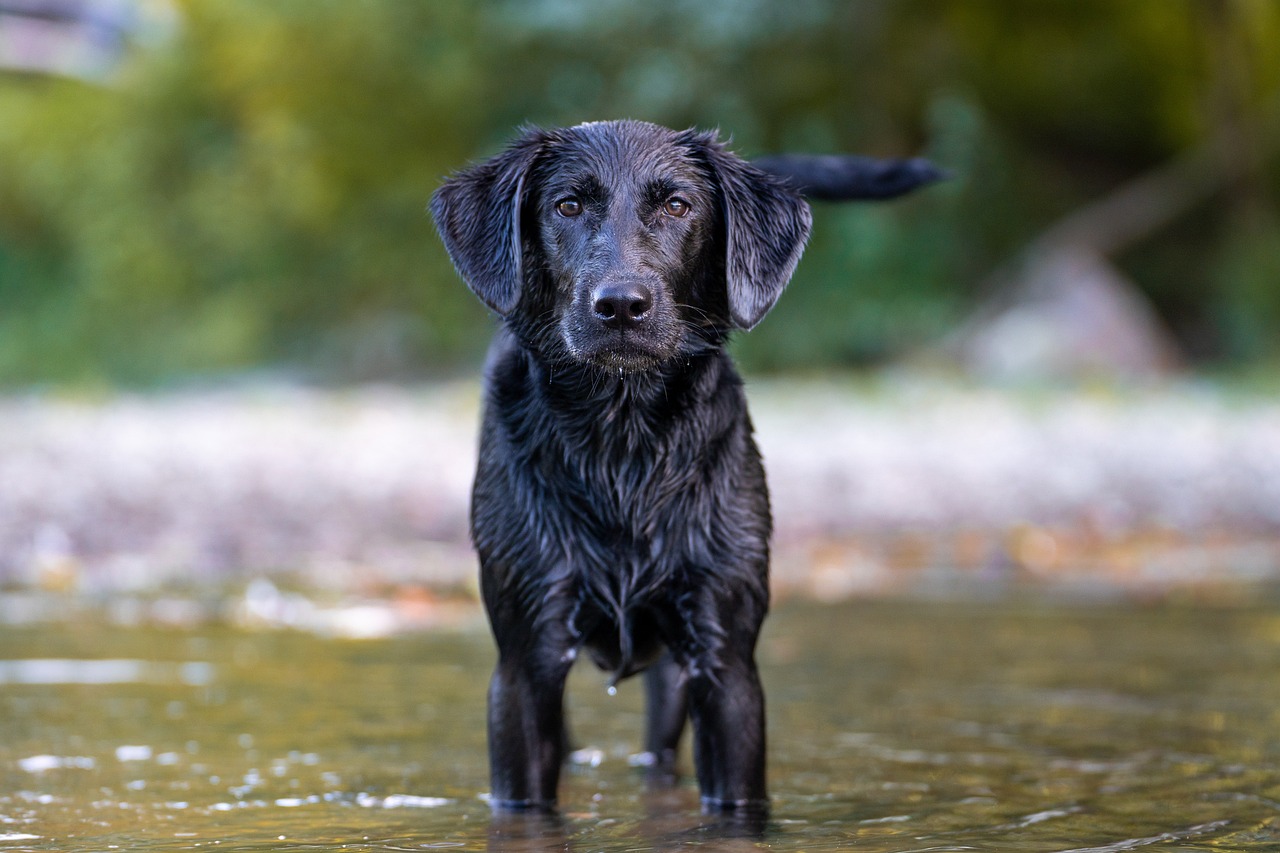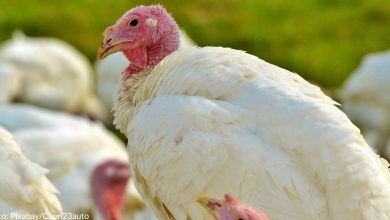20 Fun & Fascinating Facts About Lab Puppies

Labs, officially known as Labrador Retrievers, rank among the world’s most beloved dog breeds. Characterized by their loyalty, intelligence, and affability, they make excellent companions and service dogs. In this article, we will explore 20 engaging facts about Lab puppies that may surprise even those familiar with this popular breed.
1. Labs originate from Newfoundland, not Labrador.
Despite their name, Labrador Retrievers didn’t originate from Labrador, but rather from Newfoundland, Canada. Initially called “St. John’s dogs,” they assisted fishermen by fetching ropes and retrieving fish that escaped from fishing hooks, showcasing their innate retrieving abilities.
2. Labs come in three recognized colors.
The American Kennel Club (AKC) recognizes three standard colors for Labs: chocolate, black, and yellow. Each color has unique characteristics, but all Labs share the same friendly temperament and keen intelligence.
3. They are America’s most popular dog breed.
For many consecutive years, the Labrador Retriever has held the title of the most popular dog breed in the United States. Their versatility as family pets, hunting companions, and service dogs has contributed to their sustained popularity.
4. Labs have a “soft mouth.”
One remarkable trait of Labs is their “soft mouth.” This term means they can carry items in their mouth without biting down hard. This feature was invaluable when they were bred to retrieve the game for hunters, ensuring the catch remained undamaged.
5. Lab puppies love to chew.
Labrador puppies, particularly during their teething phase, have a strong urge to chew. Providing them with durable toys can help prevent them from gnawing on unwanted items and ensure their jaws get the exercise they need.
6. Their tails are often called “otter tails.”
Labs have thick, robust tails that resemble those of otters. Not just a cute feature, these tails serve as powerful rudders in the water, aiding them in swimming and retrieving.
7. They’re outstanding swimmers.
Labradors are natural swimmers, possessing webbed feet that act like flippers. Their water-resistant coats also provide insulation, allowing them to swim in colder waters without getting chilled.
8. Labs are frequently used as service dogs.
Owing to their intelligence, trainability, and gentle disposition, Labs are often chosen for various service roles, including guide dogs for the visually impaired, therapy dogs, and search and rescue operations.
9. Lab puppies grow quickly.
While they may start as tiny bundles of energy, Lab puppies experience rapid growth in their first year. By the time they’re one, most Labs will have reached their full size, though they might continue to fill out in muscle and width.
10. They have a double coat.
Labradors have a unique double coat that consists of a soft undercoat beneath a harder top coat. This combination helps protect them from cold water and weather, while also assisting in water repellency.
11. Labs are social butterflies.
Labs are inherently sociable and love being around people and other animals. Their affable nature makes them excellent companions but also means they thrive best with regular interaction and stimulation.
12. They have an excellent sense of smell.
Labs have a keen sense of smell, which, combined with their intelligence, makes them exceptional detection dogs. They’re often used in fields like law enforcement to detect drugs, explosives, and even certain medical conditions in humans.
13. Labs require a lot of exercise.
Being an active and energetic breed, Labradors require ample exercise. Regular walks, play sessions, and mental stimulation are essential to keep them happy and healthy.
14. They have a strong retrieving instinct.
Whether it’s a ball, toy, or even a TV remote, Labs love to retrieve. This instinct goes back to their roots as retrieving dogs for fishermen and hunters.
15. Labs have been in the spotlight.
Labradors have made several appearances in movies, television shows, and advertisements, often portraying loyal and loving family pets, mirroring their real-world characteristics.
16. They can be prone to certain health issues.
Like all breeds, Labs have predispositions to certain health conditions, including hip and elbow dysplasia. Regular veterinary check-ups and a healthy diet can help in early detection and management.
17. Labs have a voracious appetite.
Labradors are known for their hearty appetites, often eating more quickly than other breeds. Owners need to monitor their food intake to ensure they maintain a healthy weight.
18. They excel in dog sports.
Due to their intelligence, agility, and eagerness to please, Labs often excel in dog sports, such as agility, obedience, and dock diving.
19. Labs are late bloomers.
While they might physically grow quickly, Labradors often maintain their playful, puppy-like demeanor well into their adult years, endearing them to many families.
20. They’re part of the Retriever family.
Labs belong to the retriever family, alongside breeds like the Golden Retriever and Flat-Coated Retriever. All these breeds share an innate love for retrieving and water.
Conclusion
Labrador Retrievers are multifaceted dogs, combining charm, intelligence, and functionality. Whether you’re considering adding a Lab puppy to your family or just want to learn more about this fascinating breed, we hope these facts have provided some enlightening insights. With their rich history and varied talents, it’s no wonder Labs continues to win hearts worldwide.
Frequently Asked Questions About Lab & puppies

1. What are the different colors of Labrador Retrievers?
Labrador Retrievers come in three recognized colors: chocolate, black, and yellow. However, the shade of yellow can vary, ranging from fox-red to light cream. Despite the color variations, all Labs share the same breed characteristics and temperament.
2. How much exercise do Labs need daily?
Labrador Retrievers are an active and energetic breed, requiring regular exercise. Ideally, they should receive at least an hour of physical activity daily, which can include walks, playtime, and training sessions. Without adequate exercise, they can become restless and may develop behavioral issues.
3. Are Labs good with children and other pets?
Yes, Labs are known for their gentle and tolerant nature, making them excellent companions for families with children. They also generally get along well with other pets, especially if introduced properly. However, interactions with young children should always be supervised to ensure the safety of both the child and the dog.
4. How long is the average lifespan of a Labrador Retriever?
The average lifespan of a Labrador Retriever is 10 to 12 years. With proper care, regular vet check-ups, and a balanced diet, many Labs live longer, fulfilling lives, reaching their early to mid-teens.
5. Are Labs easy to train?
Labrador Retrievers are known for their intelligence and eagerness to please, making them relatively easy to train. They excel in obedience and are often used as service dogs. Consistency, patience, and positive reinforcement techniques are key to their effective training.
6. Do Labs shed a lot?
Yes, Labradors have a double coat and shed throughout the year, with heavier shedding typically occurring in the spring and fall. Regular brushing can help manage shedding and keep their coat healthy.
7. What are common health issues in Labs?
Labrador Retrievers are predisposed to certain health issues, including hip and elbow dysplasia, eye conditions, and obesity. Regular veterinary check-ups, a proper diet, and responsible breeding can help mitigate some of these concerns.
8. Are Labs good swimmers?
Yes, Labs are naturally adept swimmers. Their webbed feet, water-resistant coat, and otter-like tail make them excellent in the water. However, it’s still essential to introduce them to water safely and monitor them during swimming sessions.
9. How often should Labs eat?
Labs typically eat twice a day, once in the morning and once in the evening. It’s essential to follow recommended portion sizes based on their age, weight, and activity level to ensure they maintain a healthy weight, as they can be prone to overeating.
10. What is the origin of the Labrador Retriever’s name?
Despite their name, Labrador Retrievers originated in Newfoundland, not Labrador. They were initially known as “St. John’s dogs” and were used by fishermen to assist with fishing tasks before evolving into the breed we recognize today.




